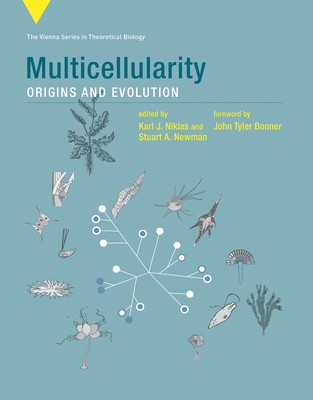
- We will send in 10–14 business days.
- Publisher: MIT Press
- ISBN-10: 0262545853
- ISBN-13: 9780262545853
- Format: 17.8 x 22.9 x 1.8 cm, softcover
- Language: English
- SAVE -10% with code: EXTRA
Multicellularity (e-book) (used book) | bookbook.eu
Reviews
Description
Scholars consider the origins and consequences of the evolution of multicellularity, addressing a range of organisms, experimental protocols, theoretical concepts, and philosophical issues. The evolution of multicellularity raises questions regarding genomic and developmental commonalities and discordances, selective advantages and disadvantages, physical determinants of development, and the origins of morphological novelties. It also represents a change in the definition of individuality, because a new organism emerges from interactions among single cells. This volume considers these and other questions, with contributions that explore the origins and consequences of the evolution of multicellularity, addressing a range of topics, organisms, and experimental protocols.Each section focuses on selected topics or particular lineages that present a significant insight or challenge. The contributors consider the fossil record of the paleontological circumstances in which animal multicellularity evolved; cooptation, recurrent patterns, modularity, and plausible pathways for multicellular evolution in plants; theoretical approaches to the amoebozoa and fungi (cellular slime molds having long provided a robust model system for exploring the evolution of multicellularity), plants, and animals; genomic toolkits of metazoan multicellularity; and philosophical aspects of the meaning of individuality in light of multicellular evolution.
Contributors
Maja Adamska, Argyris Arnellos, Juan A. Arias, Eugenio Azpeitia, Mariana BenÃtez, Adriano Bonforti, John Tyler Bonner, Peter L. Conlin, A. Keith Dunker, Salva Duran-Nebreda, Ana E. Escalante, Valeria Hernández-Hernández, Kunihiko Kaneko, Andrew H. Knoll, Stephan G. König, Daniel J. G. Lahr, Ottoline Leyser, Alan C. Love, Raul Montañez, Emilio Mora van Cauwelaert, Alvaro Moreno, Vidyanand Nanjundiah, Aurora M. Nedelcu, Stuart A. Newman, Karl J. Niklas, William C. Ratcliff, Iñaki Ruiz-Trillo, Ricard Solé
EXTRA 10 % discount with code: EXTRA
The promotion ends in 15d.19:34:21
The discount code is valid when purchasing from 10 €. Discounts do not stack.
- Publisher: MIT Press
- ISBN-10: 0262545853
- ISBN-13: 9780262545853
- Format: 17.8 x 22.9 x 1.8 cm, softcover
- Language: English English
Each section focuses on selected topics or particular lineages that present a significant insight or challenge. The contributors consider the fossil record of the paleontological circumstances in which animal multicellularity evolved; cooptation, recurrent patterns, modularity, and plausible pathways for multicellular evolution in plants; theoretical approaches to the amoebozoa and fungi (cellular slime molds having long provided a robust model system for exploring the evolution of multicellularity), plants, and animals; genomic toolkits of metazoan multicellularity; and philosophical aspects of the meaning of individuality in light of multicellular evolution.
Contributors
Maja Adamska, Argyris Arnellos, Juan A. Arias, Eugenio Azpeitia, Mariana BenÃtez, Adriano Bonforti, John Tyler Bonner, Peter L. Conlin, A. Keith Dunker, Salva Duran-Nebreda, Ana E. Escalante, Valeria Hernández-Hernández, Kunihiko Kaneko, Andrew H. Knoll, Stephan G. König, Daniel J. G. Lahr, Ottoline Leyser, Alan C. Love, Raul Montañez, Emilio Mora van Cauwelaert, Alvaro Moreno, Vidyanand Nanjundiah, Aurora M. Nedelcu, Stuart A. Newman, Karl J. Niklas, William C. Ratcliff, Iñaki Ruiz-Trillo, Ricard Solé


Reviews